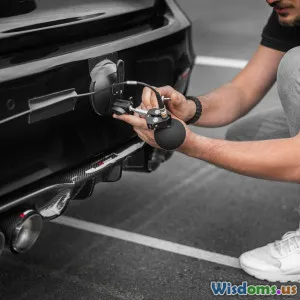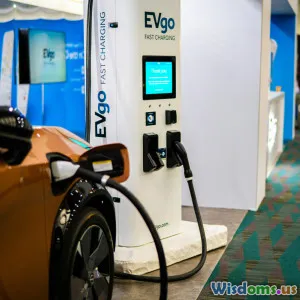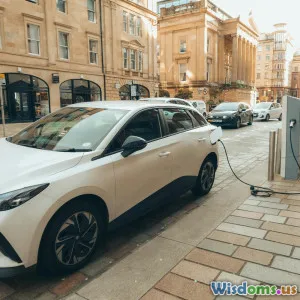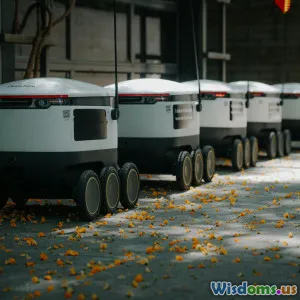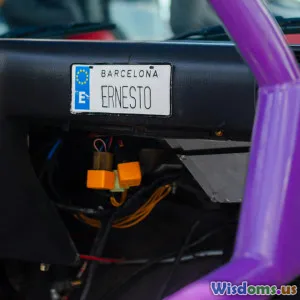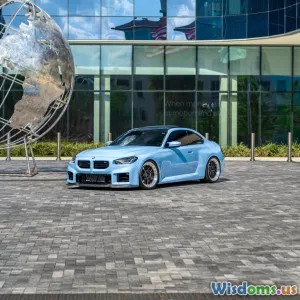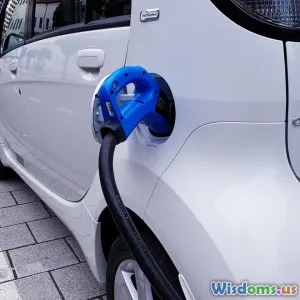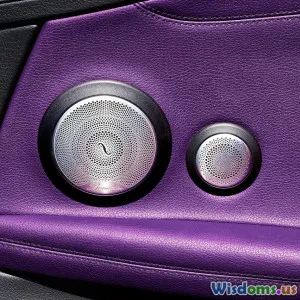
Inside the Data Revolution Powering Next Gen Connected Cars
7 min read Explore how data drives the future of next-gen connected cars, reshaping safety, efficiency, and user experience. (0 Reviews)
Inside the Data Revolution Powering Next Gen Connected Cars
Introduction
Imagine a car that’s not just a vehicle but a data powerhouse—constantly communicating, learning, and adapting to its environment. This is not science fiction but the reality of next-generation connected cars. The automotive world is undergoing a profound transformation propelled by an unprecedented data revolution. As vehicles become more connected and intelligent, they generate, share, and analyze data at volumes and velocities previously unimaginable.
This article explores the technological and analytical landscape fueling this change, revealing how data is the backbone that will redefine safety, efficiency, and user experience in automotive travel. Prepare to journey inside the data-driven engine that powers the smart cars of tomorrow.
The Foundation: What Makes a Connected Car?
Connected cars are equipped with communication technologies that allow them to connect with other vehicles (V2V), infrastructure (V2I), and even the internet. This ecosystem is often called V2X (vehicle-to-everything).
Data Generation: The Sensors and Beyond
Modern connected cars integrate a spectrum of sensors such as LiDAR, radar, cameras, GPS, and ultrasonic sensors. For example, Tesla’s Autopilot system uses eight surround cameras providing 360-degree visibility, generating terabytes of data per day. BMW’s ConnectedDrive leverages vehicle-based sensors combined with cloud data to enable features like real-time traffic updates.
Communication Protocols and Networks
5G is a game-changer here, providing ultra-low latency and high bandwidth critical for real-time communication. Smart traffic infrastructure leverages dedicated short range communications (DSRC) and Cellular-V2X (C-V2X) protocols, ensuring vehicles can instantly share information like hazard warnings or traffic flows.
Big Data Analytics: From Raw Inputs to Smart Decisions
Data Volume and Velocity Challenges
By some estimates, autonomous vehicles can produce up to 30 terabytes of data daily, combining sensor input, user behavior, and network communications. This level of volume requires robust edge computing capabilities directly within the vehicle to preprocess info before cloud transmission.
Machine Learning and AI: The Brain Behind the Wheels
AI models analyze data for predictive maintenance, driver behavior profiling, and adaptive cruise control. Waymo's autonomous cars employ deep neural networks trained on millions of miles of driving data to decide when to brake, accelerate, or take evasive action.
Real-time Data Processing
Latency is critical; milliseconds can be the difference between collision and safe navigation. NVIDIA’s DRIVE platform combines onboard GPUs with AI accelerators for split-second data interpretation, enabling decision-making without relying solely on cloud input.
Applications Transforming Mobility
Enhanced Safety through Predictive Analytics
Data analytics predict hazardous scenarios by analyzing road conditions, weather data, and nearby vehicle behavior. For instance, Volvo collects data from cloud-connected fleets to update software that improves collision detection algorithms continuously.
Traffic Management and Environmental Impact
Cities equipped with smart traffic systems use aggregated vehicle data to optimize traffic light timings, reducing congestion and carbon emissions. The city of Los Angeles partnered with INRIX to analyze connected vehicle data, cutting commute times by 15% while lowering pollution.
Personalized User Experience
Data-driven customization isn’t just about music playlists; it involves dynamic cabin climate control, adaptive navigational preferences, and predictive maintenance alerts. Audi’s connected car app integrates user data with vehicle sensors to recommend route avoidance or suggest refueling based on driver habits.
Challenges and Ethical Considerations
Data Privacy and Security
With massive amounts of personal and operational data transmitted, cybersecurity threats escalate. Automakers and suppliers invest heavily in encryption, anomaly detection, and secure access protocols. The 2022 collaboration between cybersecurity firms and automakers resulted in improved standards under the ISO/SAE 21434 framework.
Data Ownership and Regulatory Framework
Who owns the data generated—the driver, manufacturer, or service provider? Governments worldwide grapple with legislation balancing innovation with consumer rights. The EU’s General Data Protection Regulation (GDPR) impacts how connected car data is managed, emphasizing transparency and consent.
The Road Ahead: Preparing for a Data-Driven Mobility Future
The data revolution in connected cars sets the stage for fully autonomous fleets, improved urban planning, and a zero-accident vision. However, the realization of this future depends on continuous advancements in AI, robust infrastructures, and societal consensus on data governance.
Meanwhile, companies like Tesla, Waymo, and BMW continue pioneering technologies, and partnerships across sectors accelerate innovation. The journey to fully realizing connected car potential is not just about smart vehicles but smarter cities, ecosystems, and policies intertwined with data.
Conclusion
Inside every next-gen connected car lies a data engine powering unparalleled advances in safety, efficiency, and personalization. The seamless integration of sensors, communication networks, AI analytics, and cloud computing is not merely transforming vehicles—it’s revolutionizing how we move, live, and interact with our world. Understanding this data revolution offers a glimpse into a future where driving is smarter, cleaner, and safer.
Are you ready to embrace the connected car revolution and contribute to shaping the intelligent mobility landscape?
Rate the Post
User Reviews
Popular Posts










